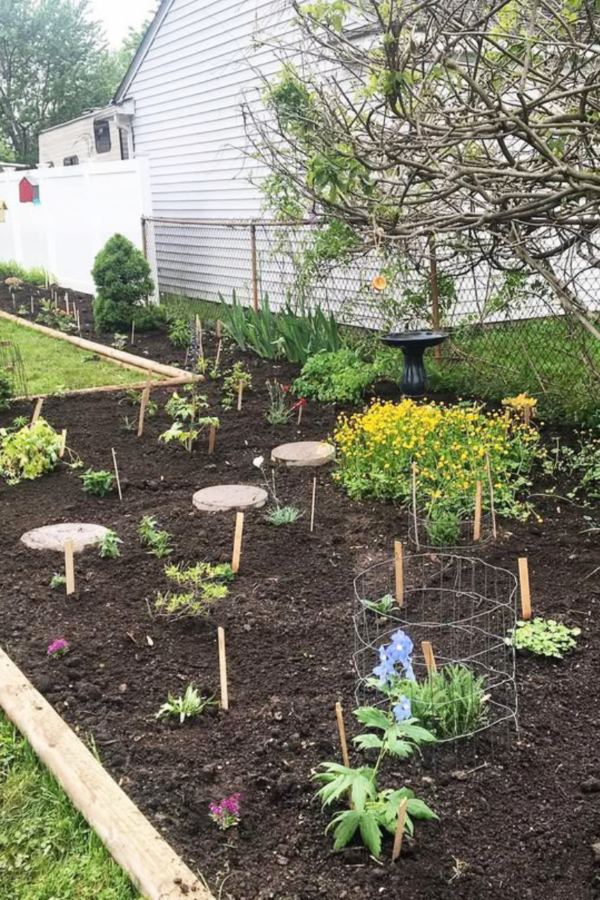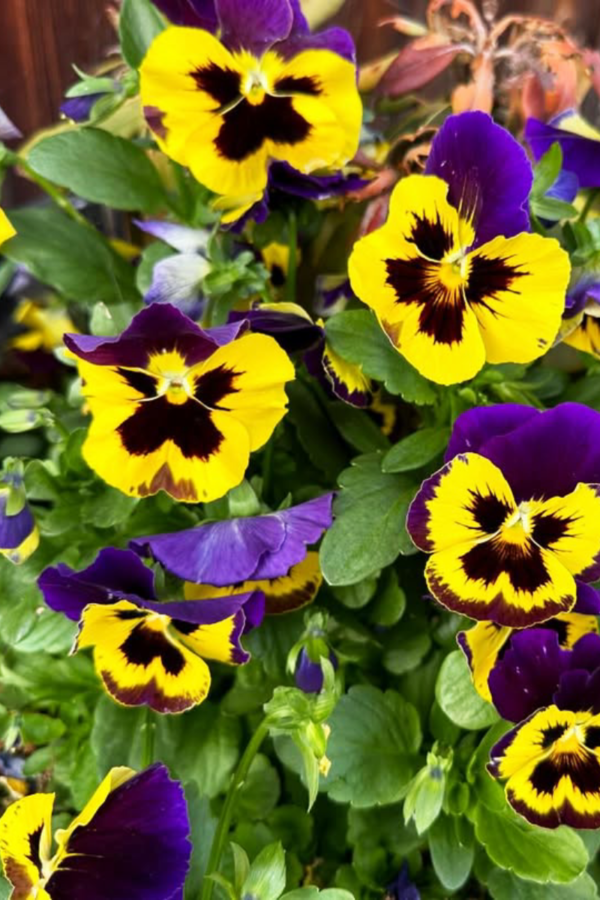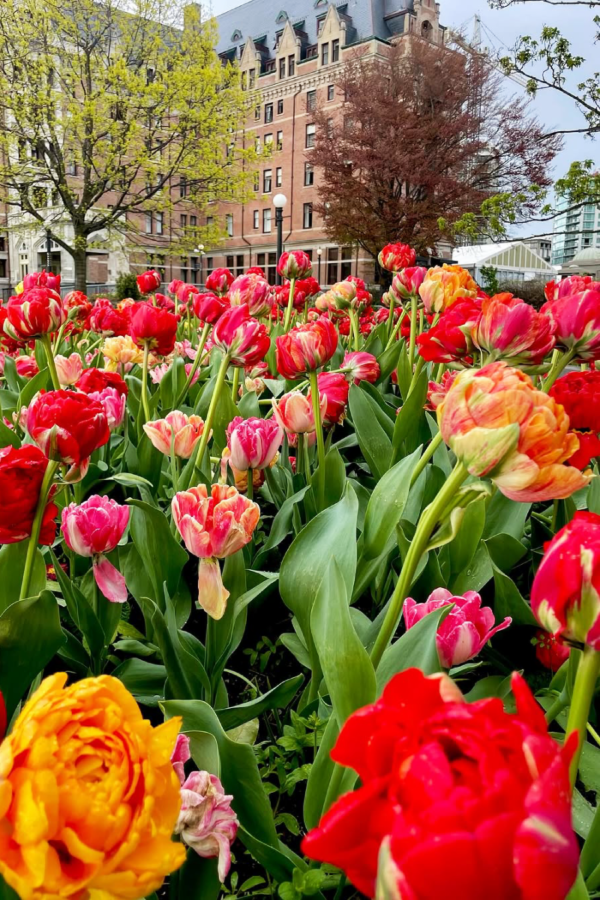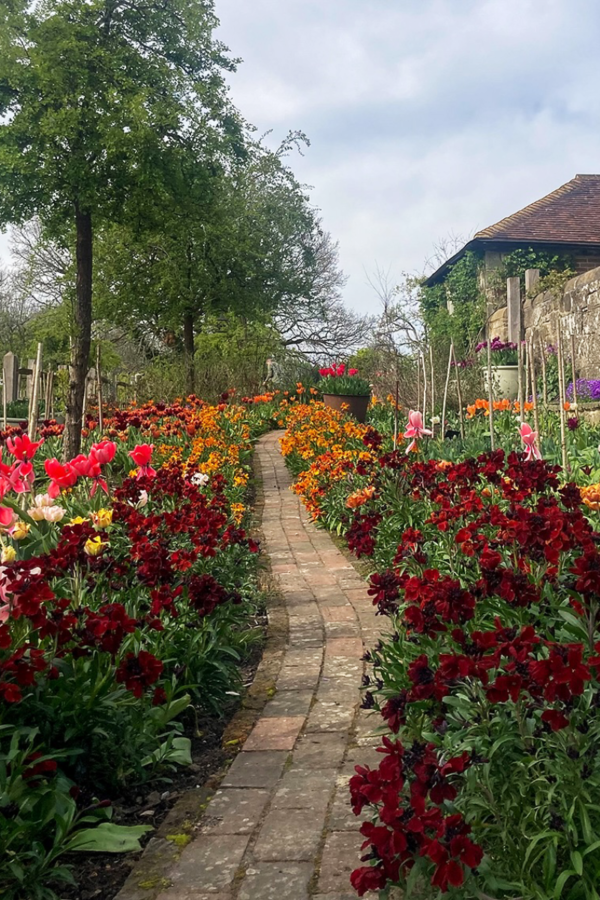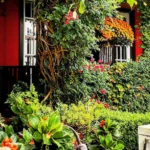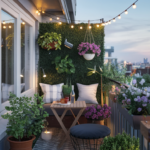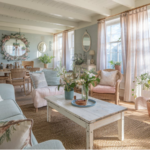When spring finally shows up, it’s like the whole world lets out a sigh of relief. Even in Florida, this year had a few too many “why is it this cold?” moments. That’s why I’ve been extra excited to dive into all things spring. Just this past week, I’ve already cranked out three garden-related blogs, and honestly? I could keep going forever.
But now comes the best part—actually bringing those ideas to life. It’s time to pick the perfect flowers, map out your garden, and get your hands gloriously covered in dirt. Whether you’ve got a sprawling backyard, a tiny balcony, or just enough space for a few potted blooms, there’s always a way to make spring feel alive right outside your door.
This blog is here to walk you through everything—from choosing the best flowers to putting together a landscape that feels fresh, colorful, and ridiculously satisfying. Winter had its turn. Now it’s time to plant something beautiful.
Planning Your Spring Flowers Garden
Designing a garden isn’t just about tossing some flowers in the dirt and hoping for the best. It’s about crafting a space that feels alive, welcoming, and totally you—whether that’s a lush, wildflower-filled oasis or a neat and tidy floral retreat. Big backyard? Great. Tiny balcony? That works too. The key is planning ahead so your plants thrive and you don’t end up regretting where you put that one flower bed after everything is already in the ground.
Find the Perfect Spot
This is the moment you’ve been waiting for. You’ve spent all winter dreaming about where your garden will go, and now it’s time to make it happen. Most spring flowers need at least six hours of sun a day, so take a good look around and find the brightest spots. It might not be your usual go-to for a garden, but this time, we’re doing it right. Got a shady corner? No problem. Flowers like bleeding hearts and hellebores love partial shade and will happily thrive there.
Give the Soil Some Love
Healthy plants start with healthy soil. If your garden’s got heavy clay or sandy soil, it’s time to mix in compost, peat moss, or manure to boost fertility and improve drainage. Not sure about your soil’s pH? Spring flowers do best in slightly acidic to neutral soil (around 6.0 to 7.0), so testing it might save you a lot of frustration later. And if your yard has a puddle problem after it rains, consider raised beds—nobody wants to deal with root rot before the season even gets going.
Plan Your Layout Like a Pro
Tempting as it is to start planting immediately, taking a little time to plan pays off big time. A quick sketch of your layout helps you organize your space, whether you’re working with a sprawling backyard or a tiny nook by the patio.
- Big backyards? Try dividing the space into sections—one for vibrant flower beds, another for a wildflower patch, maybe even a cozy seating area with a fountain.
- Smaller spaces? Vertical gardening is a total game-changer. Use wall-mounted planters, tiered pots, or hanging baskets to maximize every inch.
- Pathways? They’re not just practical—they tie everything together. Stone, gravel, mulch, or wood chips keep things neat and help guide visitors through the garden without trampling your hard work.
Pick a Garden Theme
A theme brings personality to your space, and there’s no wrong way to go about it. Here are a few ideas:
- Secret Garden – Think climbing plants on trellises, hidden benches, and winding paths through layers of flowers. Vintage lanterns make it even more magical.
- Wildflower Meadow – Low-maintenance and buzzing with pollinators. Daisies, poppies, and cornflowers mixed with tall grasses keep it looking natural and full of life.
- Japanese-Inspired Garden – Simple, peaceful, and elegant. Cherry blossoms, azaleas, and ornamental grasses with stone paths and a water feature bring total tranquility.
Make It Functional & Easy to Maintain
A little strategic planning now saves a lot of headaches later. Keep flower beds close to pathways so weeding and watering don’t turn into an obstacle course. Group plants with similar needs together to make care easier. And for those who want something super low-maintenance, tulips and daffodils basically take care of themselves once planted.
Mulch is your best friend for keeping weeds at bay and locking in moisture. And if you don’t want to spend every day watering, self-watering planters might be the best garden hack you ever try.
Plan for Year-Round Blooms
A truly great garden never feels empty, even in between blooming seasons. Stagger your flowers so something is always in bloom:
- Early bloomers like crocuses bring color right after winter.
- Mid-season stars like tulips and daffodils keep the momentum going.
- Late bloomers like alliums extend the season and keep your garden from looking dull.
A mix of perennials and annuals keeps things fresh but consistent year after year.
Final Touches Before Planting
Before digging in, clear out the weeds, old plants, and any winter debris. Loosen up the soil and add organic matter to give your flowers a strong start. If you’re using pots, make sure they have proper drainage and give them a good clean before filling them up.
With a little planning and the right flowers, your garden is about to be the envy of the neighborhood. Whether it’s a cozy corner or a full backyard escape, this is your moment to bring spring to life—one bloom at a time. to your home all season long.
Must-Have Spring Flowers for Your Garden
The right flowers bring a spring garden to life. Whether you’re all about big, bold colors, soft and delicate pastels, or something that makes people stop and say, “What is that gorgeous thing?”, there’s a perfect bloom for your space. Let’s dig in.
Classic Spring Blooms That Never Miss
Some flowers just belong in a spring garden. Tulips, daffodils, and hyacinths are the icons—the Beyoncé-level superstars of the season.
- Tulips come in just about every color imaginable. Mix bright reds, yellows, and purples for a bold display, or go with soft pinks and whites for a more elegant look. Plant them alongside daffodils for a happy, high-energy contrast that screams “Spring is HERE.”
- Daffodils are as low-maintenance as it gets. Their bright yellow blooms make any space feel cheerful, and they thrive just about anywhere, from garden beds to patio containers.
- Hyacinths are the overachievers of the flower world—not only stunningly colorful but also ridiculously fragrant. If you want a garden that smells as good as it looks, plant these beauties near doorways, pathways, or anywhere you’ll pass by and get that amazing scent.
Unique Additions for a Standout Garden
Want something a little different? These flowers bring an unexpected touch:
- Japanese cherry blossoms are the ultimate soft, romantic statement tree. Their pink petals create a peaceful, storybook vibe.
- Bleeding hearts sound dramatic, but they’re just adorable. With delicate, heart-shaped blooms dangling from arching stems, they bring whimsy to shady spots.
- Ranunculus have layered, almost rose-like petals in dreamy pastel shades or bright, punchy colors. They bring a hint of elegance and look insanely good in bouquets.
- Pansies and violas are small but mighty. Perfect for containers, balconies, or tiny garden nooks, they add a splash of personality with their bright colors and unique patterns.
Flowers That Show Up Early
If you want color as soon as winter finally packs its bags, plant these early bloomers:
- Crocuses are often the first to show up—sometimes before the last bits of snow have melted. They’re tiny but make a big impact when grouped together.
- Hellebores (Lenten roses) bloom when most flowers are still thinking about waking up. With elegant shades of white, pink, and deep purple, they thrive in cool temperatures and add sophistication to any garden.
- Iris reticulata is a must for warmer climates. With striking purple and yellow petals, it’s one of the earliest irises to bloom.
Layer Your Garden Like a Pro
A great garden isn’t just about what you plant—it’s about where you plant it. Mixing tall, medium, and low-growing flowers creates depth and keeps things visually interesting.
- Tall flowers (tulips, foxgloves) add height and drama.
- Mid-sized blooms (hyacinths, ranunculus) fill in the middle.
- Low-growing options (pansies, creeping phlox) add a finishing touch, making sure no part of your garden looks empty.
Tips for a Successful Spring Garden
- Plant bulbs like tulips and daffodils in the fall. They need time to chill (literally) before blooming.
- For potted flowers, wait until the weather warms up. Spring can be tricky with those last-minute cold snaps.
- Give flowers enough space. Crowding them might seem like a good idea at first, but they need room to grow without fighting for sunlight and nutrients.
A mix of classic favorites, unique standouts, and early bloomers means your garden will be bursting with life from the very first warm days. Pick your favorites, start planning, and get ready for a spring display that turns heads.
Landscaping Ideas for Spring Gardens
Landscaping takes a bunch of pretty flowers and turns them into a garden that actually feels put together. It’s the difference between a random collection of plants and something that makes people stop and say, Wow, that looks amazing. Whether you’ve got a sprawling backyard or a cozy little space, a few thoughtful choices can pull everything together and make your spring garden look intentional and full of life.
Using Flowers for Depth & Structure
A garden isn’t just about color—it’s about movement, height, and texture. Think of it like painting a picture.
- Tall flowers like foxgloves and delphiniums create a dramatic backdrop.
- Medium-height blooms (tulips, daisies, coneflowers) add fullness.
- Short flowers like pansies or creeping phlox soften the edges and bring everything together.
Want clean lines? Use rows of tulips or daffodils to define pathways and garden beds for a structured, polished look. Prefer a more natural, relaxed vibe? Clusters of wildflowers spilling over the edges create that soft, meadow-like charm. Either way, your flowers aren’t just decorations—they shape the entire space.
The Beauty of a Wildflower Garden
Wildflower gardens are perfect if you want color without a ton of upkeep. A mix of daisies, cornflowers, and black-eyed Susans can be scattered like confetti, filling empty spaces without needing precise placement. They attract bees, butterflies, and all the good pollinators, making your garden feel alive in more ways than one.
This style works great for larger gardens or along the edges of more structured spaces. Plus, wildflowers tend to take care of themselves, meaning less watering, less weeding, and more time enjoying the view.
Add Hardscaping for Contrast
Flowers are great, but adding stones, trellises, or arbors makes the space feel complete.
- Stepping stones or gravel pathways keep people from stomping on delicate plants while adding structure.
- Trellises with climbing flowers like sweet peas or clematis give vertical interest and create dreamy focal points.
- An arbor covered in wisteria? Instant secret-garden vibes.
And if you want a space to sit and soak it all in, try adding a rustic wooden bench or a tucked-away birdbath. Hardscaping isn’t just for looks—it guides the flow of the garden and makes it more functional.
Mixing Greenery with Spring Blooms
Flowers steal the show, but greenery makes everything pop. Shrubs, ornamental grasses, or groundcovers help balance bright blooms and keep the garden looking good even after spring flowers fade.
- Pair tulips with a boxwood hedge for a structured, timeless look.
- Surround daffodils with feathery ferns to add softness.
- Use creeping ivy or moss to fill in gaps and add texture.
Greenery keeps the space feeling lush as seasons shift, so your garden doesn’t feel like a before-and-after meme once the first blooms fade.
Big Garden? Small Garden? Make It Work.
- For big yards, divide the space into zones. Formal flower beds, a wildflower patch, maybe even a little reading nook surrounded by blooms. Pathways, hedges, and trellises help define different areas so it doesn’t just feel like one giant flower explosion.
- For small spaces, layering is everything. Use tall flowers like delphiniums to add height, medium blooms to fill things in, and low-growing flowers to keep the base colorful.
- Got zero ground space? Hanging baskets, wall-mounted planters, and vertical trellises give you a full garden feel without taking up precious square footage.
Landscaping Tips for a Spring Garden That Feels Intentional
✔ Sketch a quick layout before planting so everything feels balanced.
✔ Use pathways to guide movement and highlight key areas.
✔ Pick low-maintenance plants if you don’t want to be outside weeding all the time.
✔ Add focal points like a trellis, a fountain, or a standout flower bed to anchor the design.
A little planning goes a long way, turning your garden into a space that feels like an extension of your home. Spring is here—it’s time to make it bloom.
Creating a Flower Garden Aesthetic
Your garden isn’t just a bunch of flowers in the ground—it’s an extension of your style, personality, and overall plant-parent energy. The way you mix colors, textures, and little decorative details completely changes the vibe, turning a simple flower bed into something truly magical. Whether you love a wild, colorful explosion or something more refined and elegant, the right choices make all the difference.
Choosing a Color Palette That Feels Right
Color can completely shift the mood of a garden.
- Monochromatic gardens create a soft, soothing effect. Think lavender, irises, and alliums in different shades of purple for an elegant, cohesive look.
- Contrasting colors bring bold energy. Red tulips paired with white daffodils? Stunning. Yellow ranunculus next to blue hyacinths? Instant eye-catcher.
- Pastels are perfect for a dreamy, cottage-style garden. Pink peonies, blue forget-me-nots, and pale yellow primroses give soft, romantic vibes.
- Bright, high-energy combos make everything feel lively. Orange poppies, hot pink hyacinths, and yellow daffodils bring pure joy to any space.
Mixing Textures for Depth & Interest
The best gardens don’t just look good—they feel layered and dynamic. Playing with different textures gives that lush, full effect that makes a garden truly stand out.
- Feathery ornamental grasses add movement and contrast against soft, delicate blooms like pansies or peonies.
- Bold, structured plants like succulents or agaves make unexpected focal points alongside traditional flowers.
- Trailing flowers like creeping phlox or sweet alyssum soften edges and spill over planters, adding a whimsical touch.
- Upright plants like snapdragons or gladiolus bring height and dimension, making the space feel layered and intentional.
Whimsical Details That Make It Feel Like Your Garden
Flowers are just the beginning. A few creative touches bring personality into the mix.
- A pergola covered in wisteria or climbing roses? Instantly magical.
- A simple water feature—even just a small fountain—adds movement and a soothing soundtrack.
- Vintage garden tools repurposed as decor give everything a charming, homey feel.
- A hidden bench surrounded by blooms turns your garden into a personal retreat.
- String lights or lanterns? Yes, please. Evening glow-ups make gardens feel just as magical at night.
Japanese-Inspired Garden Vibes
Want something more minimalist and calming? A Japanese-inspired garden focuses on balance, simplicity, and natural elements.
- Cherry blossoms, azaleas, or camellias bring soft, traditional beauty.
- Gravel pathways, small stones, and wooden accents keep things peaceful and structured.
- A koi pond or stone water basin adds a quiet, meditative focal point.
- Bamboo fencing or lanterns tie everything together for that signature zen feel.
Making It Your Garden
The best gardens reflect personality.
- Love a bold, modern look? Try sleek planters with sculptural plants and clean lines.
- Want timeless elegance? Stick to classics like roses, tulips, and daffodils with simple, refined borders.
- Like a little bit of everything? Mix and match textures, colors, and heights for a fun, eclectic feel.
Even tiny details—like a carefully placed garden bench or a favorite color theme—help pull everything together into a space that feels uniquely yours.
Spring Garden Care: Keeping It Thriving
A beautiful garden doesn’t happen by accident. A little care and attention go a long way in keeping everything blooming and looking its best.
Getting Planting Right
- Timing is key. Bulbs like tulips and daffodils need to go in during fall. Flowers like pansies and ranunculus should wait until the last frost passes.
- Spacing matters. Overcrowded plants compete for nutrients and sunlight. Check seed packets or plant tags to give each flower the space it needs.
- Healthy soil = happy plants. Loosen up the dirt, mix in compost or fertilizer, and give your flowers the best possible start.
Watering & Feeding for Strong Blooms
- Spring flowers love consistent moisture. Aim for deep, even watering to keep the soil moist but not swampy.
- Morning watering is best. It gives plants time to dry out before night, reducing the risk of fungus or rot.
- A balanced flower fertilizer helps maintain vibrant blooms. Look for a nitrogen-phosphorus-potassium (NPK) mix designed for flowers, and reapply every few weeks to keep everything thriving.
Dealing with Pests & Plant Problems
Spring means new blooms, but also hungry pests. Keep an eye out for signs of trouble.
- Aphids? A little dish soap and water can take care of them, or introduce ladybugs—they love snacking on aphids.
- Slugs? Try beer traps (yes, really) or sprinkle crushed eggshells around plants to keep them away.
- Caterpillars? Pick them off by hand or use organic insecticides if they’re out of control.
- Mildew or rot? Avoid overwatering, trim overcrowded areas for better airflow, and remove infected leaves to stop the spread.
Keeping Blooms Going Strong
- Deadheading (removing spent flowers) encourages new growth and keeps plants from putting energy into seed production instead.
- Mulching helps retain moisture, reduce weeds, and regulate soil temperature. A layer of wood chips, straw, or compost does wonders for plant health.
Prepping for Summer Without Losing Spring’s Beauty
Spring might be ending, but that doesn’t mean your garden has to.
- Mix in summer bloomers like zinnias, marigolds, or daylilies so the color keeps going.
- Trim back spring flowers as they fade, leaving room for new growth.
- Keep an eye on watering needs—hotter weather means plants may need extra attention.
General Garden Care Tips
✔ Stay consistent—plants love routine.
✔ Keep things tidy—weeds and debris can invite pests and disease.
✔ Use quality tools—sharp pruners and sturdy gloves make life easier.
✔ Be patient—gardens take time to reach their full potential, and the process is part of the fun.
Final Thoughts: Bring on the Blooms
A spring garden isn’t just about pretty flowers—it’s about creating a space that feels like an extension of you. With the right colors, textures, and a few thoughtful details, your garden can be a place of beauty, peace, and pure joy all season long.
And with a little care—watering, feeding, deadheading, and prepping for summer—it’ll keep thriving long after the first blooms fade.
No matter how big or small your space is, there’s always room to plant something amazing. Start planning, get your hands in the dirt, and bring some serious color to your world this spring.
FAQ
- What are the best flowers to plant in spring?
The best flowers to plant in spring include tulips, daffodils, hyacinths, pansies, primroses, petunias, snapdragons, and marigolds. Perennials such as peonies, daylilies, and bleeding hearts also thrive when planted in early spring. Hardy annuals like sweet peas and poppies can be planted as soon as the soil is workable. - When should I start my spring flower garden?
Start planting spring bulbs in the fall before the ground freezes. For spring-planted flowers, wait until the last frost has passed, typically mid to late spring, depending on your climate zone. Some hardy flowers like pansies and primroses can be planted earlier, while tender annuals like petunias and zinnias should wait until temperatures are consistently warm. - What flowers are in the spring season?
Common spring-blooming flowers include tulips, daffodils, crocuses, hyacinths, lilacs, irises, peonies, bluebells, and cherry blossoms. Other seasonal flowers include pansies, primroses, violets, snapdragons, and bleeding hearts. - What is the easiest flower to grow in spring?
Pansies, marigolds, zinnias, petunias, and sunflowers are among the easiest flowers to grow in spring. They require minimal maintenance and adapt well to various growing conditions. - What plant blooms all spring and summer?
Geraniums, coneflowers, coreopsis, black-eyed Susans, petunias, and daylilies bloom from spring through summer with proper care. Perennials like shasta daisies and lavender also provide long-lasting blooms. - What is the easiest plant to grow in spring?
Marigolds, zinnias, cosmos, sunflowers, and nasturtiums are among the easiest plants to grow in spring. They germinate quickly, tolerate a range of soil conditions, and require little maintenance.



